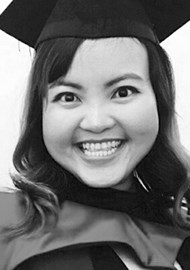The Children’s Surgical Centre (CSC) is a Non-Governmental-Organisation (NGO) hospital situated in Phnom Penh, the capital of Cambodia. CSC was developed for landmine victims over 20 years ago by Dr Jim Gollogly after the dark period under the Pol Pot regime (https://csc.org/). Nowadays, CSC has blossomed to provide specialist ENT, plastic and reconstructive surgery, ophthalmology, and orthopaedic services at no cost to thousands of underprivileged Cambodians. Ngan Hong (Tanya) Ta, a medical student, gives us an informative overview of its challenges and opportunities.
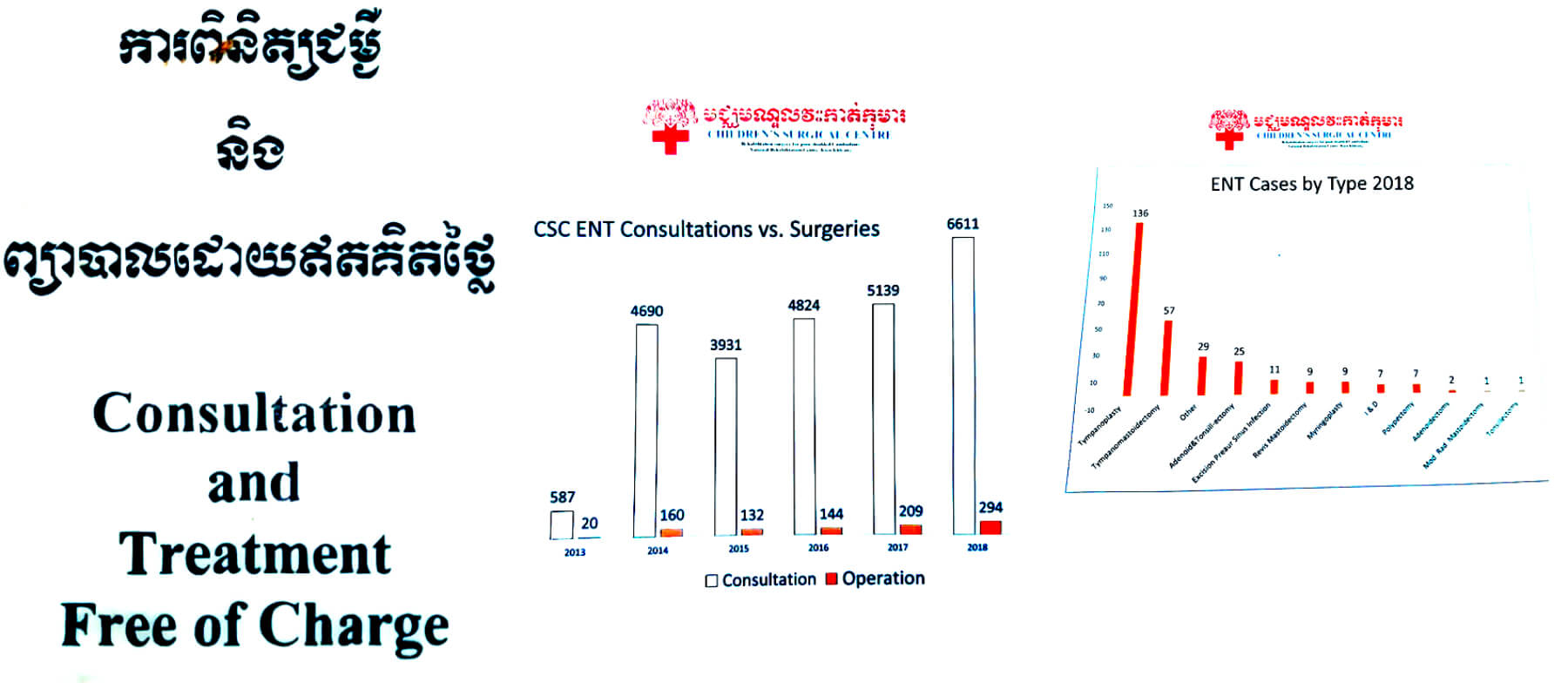
Cambodian healthcare system and ENT and audiology services
The Cambodian healthcare system is still recovering from the deliberate workforce destructions caused by the Khmer Rouge regime, in which healthcare professionals were targeted [1]. The public healthcare system is chronically underfunded, with low-expertise health clinics and non-specialist doctors acting as the main care providers in Cambodia [2]. Patients often need to travel hours to get specialist treatments in Phnom Penh. Preah Ang Duong (PAD) hospital is the only hospital providing services in all ENT subspecialties in Cambodia.
Since its services are only available to patients who can fund their treatments, most underprivileged Cambodians are deterred from obtaining care. PAD hospital is also the only ENT training centre in the nation. The shortage of ENT training programmes [2] widens the gap of ENT services available between the rich and the poor.
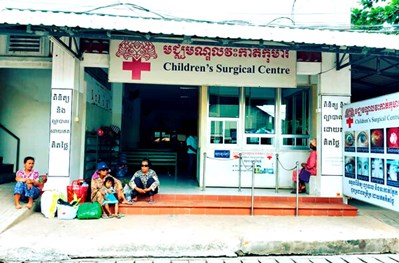
Children’s Surgical Centre entrance.
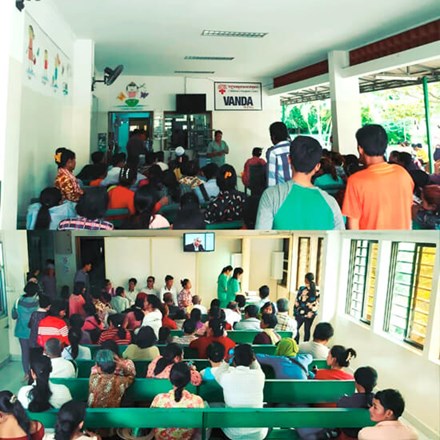
CSC patient waiting areas.
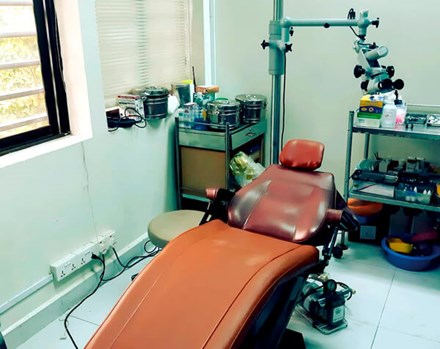
An all-in-one consultation and treatment room.
Traditional Khmer medicine is still widely practised in Cambodia, especially in rural districts near the Thai and Vietnamese borders. ENT patients often have tried traditional remedies and consulted non-medically trained ‘traditional healers’ prior to presenting at CSC. Additionally, the existence of cheap, easily accessible and poorly regulated pharmacies further delays the presentations of ENT conditions.
In Cambodia, there are only two NGO hearing aid providers (http://allearscambodia.org/). The non-NGO providers are more costly and inaccessible to most Cambodians. In spite of the lower cost of the actual hearing aid, there are still barriers i.e. indirect costs such as loss of earnings when off work and direct costs such as travel costs. These prevent many Cambodians from utilising these resources.
“The public healthcare system is chronically underfunded, with low-expertise health clinics and non-specialist doctors acting as the main care providers in Cambodia”
ENT and audiology services at CSC
CSC’s ENT and Audiology department has an all-female team consisting of one trained ENT surgeon, two general doctors and five ENT nurses. Despite consulting over 6600 patients yearly, the trained ENT surgeon can only conduct common ENT operations including tonsillectomy, adenoidectomy and complex ear surgery such as mastoidectomy and tympanoplasty. The shortage of expertise in laryngology and rhinology is due to the scarce resources and training opportunities. The ENT nurses are pragmatic and resourceful; they have different roles varying from consulting and treating patients to conducting hearing tests, making bespoke earmoulds and assisting in theatre.
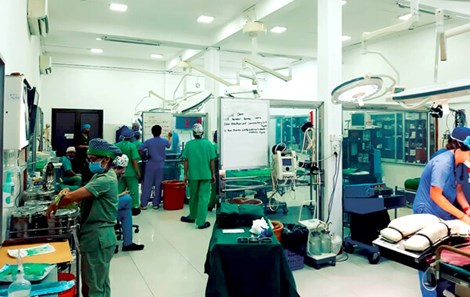
A three-bed, air-conditioned operating theatre.
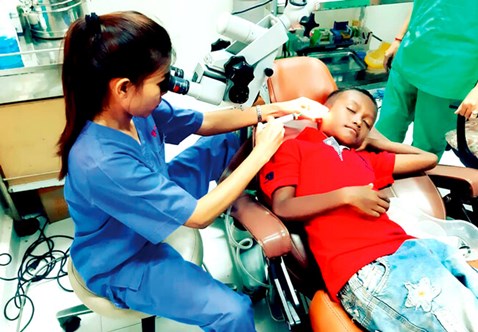
Dr Davy delivering micro-suction.
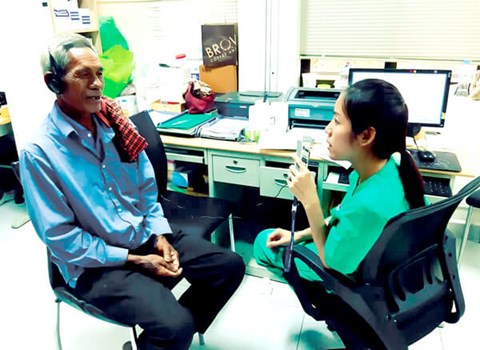
ENT nurse communicating with a patient with severe hearing loss through
a sound amplifier, donated by Chris Waterworth.
CSC’s audiology services include pure tone audiology, tympanometry and hearing aids. The services are made possible by generous donations and tireless training by Chris Waterworth, an audiologist from the University of Melbourne. He has developed a resourceful method to make silicone earmoulds which is freely available to view on YouTube [3]. CSC ENT nurses are currently being trained in this method using materials readily available in Cambodia. The earmoulds are attached to donated behind the ear hearing aids. The innovation has enabled CSC’s ENT department to provide free hearing aids for patients in a one-stop appointment, reducing the indirect costs of getting hearing aids.
My experience at CSC
Every day at CSC starts out with a pan-speciality clinical meeting at 8am. There are opportunities for both Khmer and visitors to deliver teaching. The talks are well-presented in both English and Khmer. This is an incredible approach for continuous professional development and for building a strong hospital community. The second part of the meeting includes case discussions, in which previously-deemed fit for surgery patients are asked to sit in the middle of the room. The patients and their designated surgeons are questioned by CSC staff on their clinical details. This approach differed significantly to what I was used to in the UK.
“It was shocking for me to witness the damages caused by outdated traditional methods”
All three surgical teams work adjacent to each other in a three-bed, air-conditioned operating theatre, without anaesthetic rooms or laminar air flow. I was welcomed to scrub in all operations and was able to assist in mastoidectomies and tympanoplasties. Due to the limited resources, there were no facial nerve monitors. All ENT consultations take place in a small room in which the treatments are also conducted. I was fortunate to consult and examine many patients daily. A case that I would never forget is a female patient with cholesteatoma which had eroded all the ossicles away as well as the mastoid bone and facial nerve. This was a late presentation after two years of seeking traditional Khmer methods which included inserting garlic cloves into the ear canal.
It was shocking for me to witness the damages caused by outdated traditional methods including the use of burnt cotton buds, peppers and perfumes to cure discharging ears. Additionally, I observed the bespoke earmould-making method. Considering how pioneering and sustainable the method is, I believe that we, as doctors from developed nations, can learn from the resourcefulness and the innovative mindset. I also witnessed the impact of ear surgery and hearing aids on the lives of Cambodians. For instance, a 10-year-old boy with a five-year history of severe hearing loss affecting his speech and language development was given a chance to continue his education. Another example is a 67-year-old farmer who was enabled to continue working as the main earner for his family.
Without a doubt, the ENT and audiology services at CSC have changed the lives of many Cambodians.
Conclusions
After discussion with CSC staff, I have realised that there is a need for regular otology and head & neck fellowships between CSC and developed nations. For more information please visit https://csc.org/
References
1. Vilim L. Prosecuting Khmer Rouge Medical Practices as Crimes against Humanity. Georgetown University Law Center.
www.d.dccam.org/Tribunal/Analysis/
pdf/Prosecuting_Khmer_Rouge_
Medical_Practices_as_Crimes_
against_Humanity.pdf
2. Pacific WHOROftW. Human resources for health country profiles: Cambodia: Manila: WHO Regional Office for the Western Pacific; 2014.
http://iris.wpro.who.int/
handle/10665.1/10524
3. Waterworth C. How to make Earmolds: Cambodian Audiology Training Channel; 2018.
www.youtube.com/
watch?v=o6uU_jTmEUA
(All links accessed November 2019)

